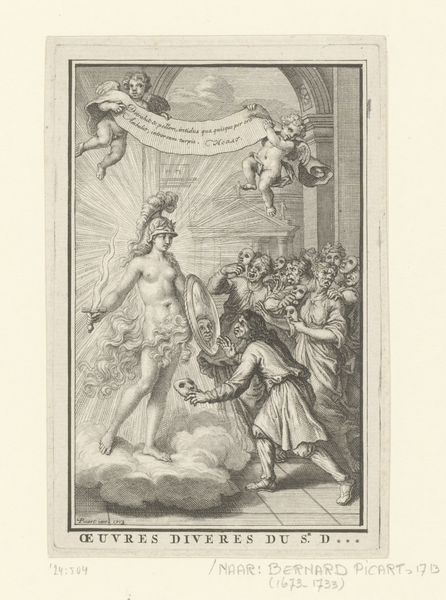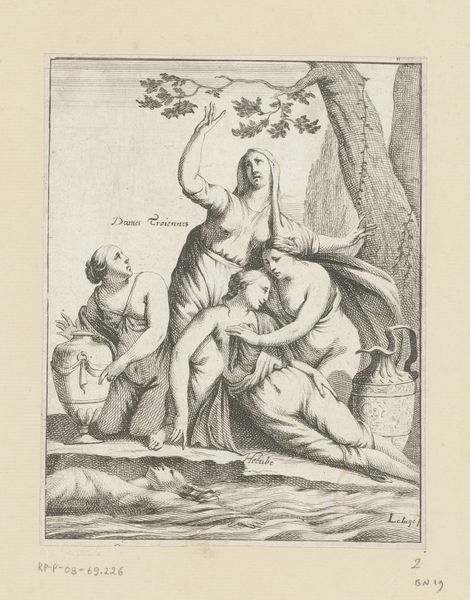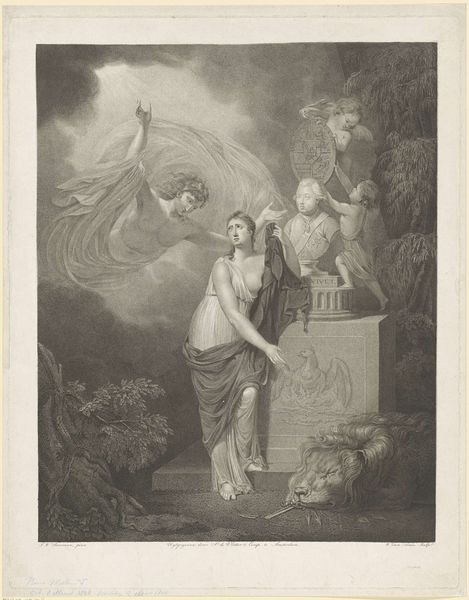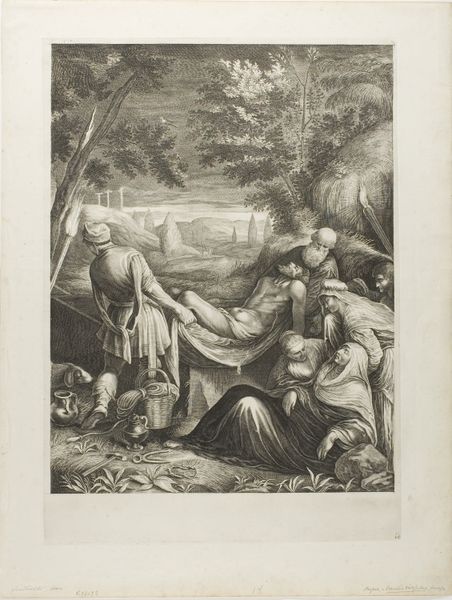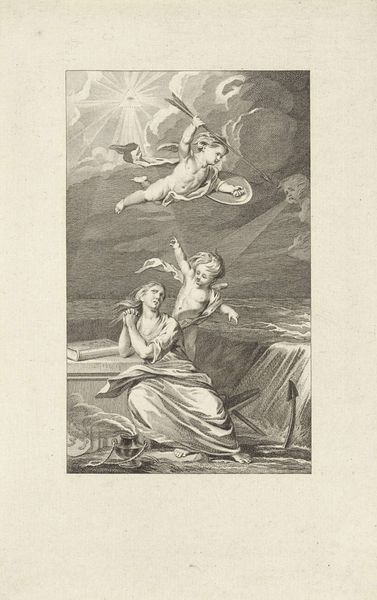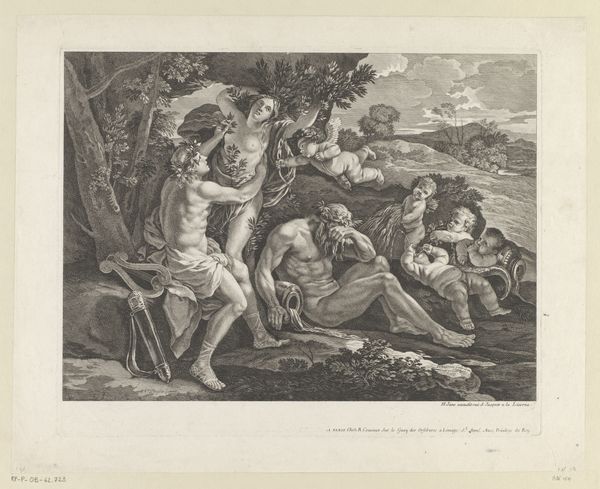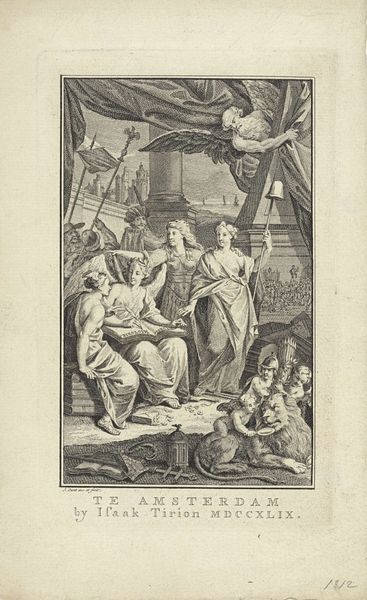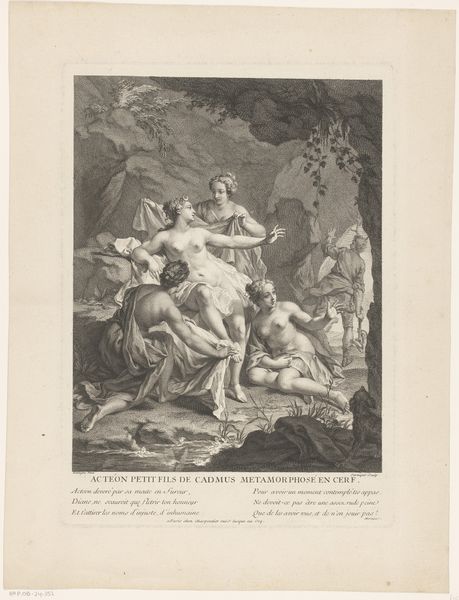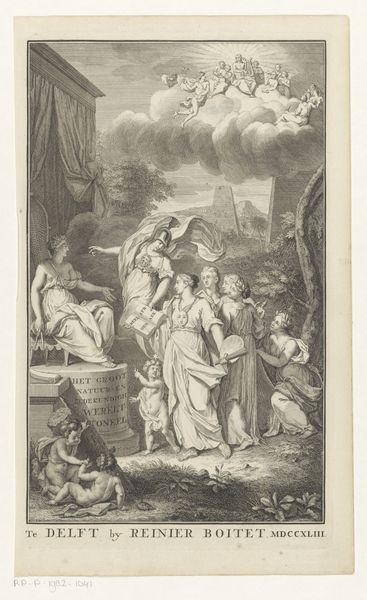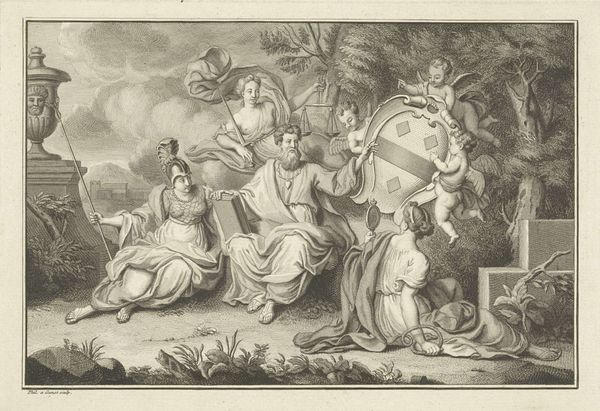
engraving
#
portrait
#
neoclacissism
#
allegory
#
history-painting
#
engraving
Dimensions: height 460 mm, width 380 mm
Copyright: Rijks Museum: Open Domain
Curator: Jacob Ernst Marcus created this engraving titled "Grafmonument met het portret van Johann Caspar Lavater" in 1801. Editor: Well, it's certainly a dramatic composition, isn’t it? Stark contrasts, very neoclassical in its structured forms. It strikes me as incredibly posed. Curator: It adheres to Neoclassical principles indeed, favoring clarity and order. Note the pyramidal structure of the monument and the careful balance of figures arranged around it. The cool palette is also noteworthy, limited to monochrome tones. Editor: I'm struck by the symbolism embedded here. The weeping woman, Faith with her cross, and that cherubic figure presenting a portrait of Lavater...it speaks volumes about grief, faith, and remembrance. What do you make of it? Curator: The weeping woman, draped in classical garb, signifies mourning and perhaps civic virtue, judging by her posture. Faith, stoic and upright with her cross, embodies spiritual strength, and of course, the putto reveals Lavater, capturing his essence in a circular frame. Circles, in art, often suggest wholeness, timelessness... Editor: Right, but it also reminds us of portrait medals which often displayed an individual's accomplishments. In the context of a tomb, doesn't the entire image suggest the celebration of Lavater’s life, almost a saintly aura, wouldn’t you say? Considering his religious background? Curator: I can concede to that reading. He was after all, a prominent theologian and philosopher. Though to frame it simply as hagiography reduces the artwork’s engagement with formal conventions. Notice the considered placement of books at the base; could these also act as an indication of how Marcus intended us to understand Lavater as more than a man of faith? Editor: Perhaps a call to learning? To explore our world with diligence... Still, considering the turbulence of the late 18th century, and Lavater's tragic death at the hands of revolutionary soldiers, it functions as a poignant reminder of human vulnerability against ideological fanaticism. The iconography has such lingering power! Curator: True enough, however, I find the composition’s organization is very clever, given how chaotic everything must have been in reality during this time, that a deliberate attempt was made to frame grief and violence through geometric symmetry speaks to Marcus's aesthetic choices. Editor: So while you see it as an exercise in Neoclassical formalism, I find myself drawn into the layered emotions and stories within the engraving. A powerful collision of style and cultural memory. Curator: And on that intersection, it appears we find accord. A testament to art's endless capacity to provoke thought.
Comments
No comments
Be the first to comment and join the conversation on the ultimate creative platform.

